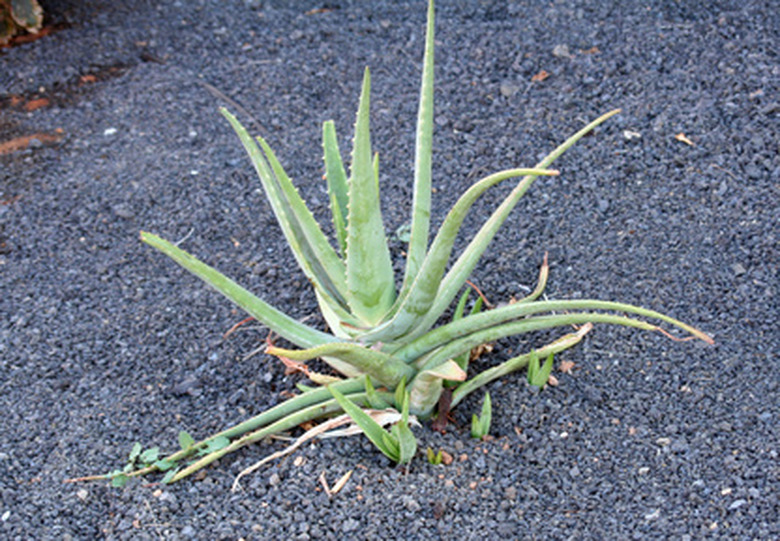Plants That Look Like Aloe Vera
The aloe vera plant is a succulent that grows wild in arid climates and is often grown in gardens and in the home. The juice from the aloe plant is used in medicines as well as cosmetics. The spiky green, serrated leaves have white specks and the plant produces tubular flowers.
Significance
Many people like to cultivate aloe for its perceived cosmetic and health benefits. They may not be as interested in growing plants that look like aloe, such as agave and yucca. Or, conversely, they may be interested in growing agave and yucca but not aloe. It's important to know an aloe plant when you see one.
- The aloe vera plant is a succulent that grows wild in arid climates and is often grown in gardens and in the home.
- They may not be as interested in growing plants that look like aloe, such as agave and yucca.
Agave
Agave is often confused with aloe vera. Agave, a perennial, also features green, spiky leaves. The leaves are broader than the aloe plant's leaves. The borders of the leaves are a paler green. Agave, like aloe vera, also has many uses. Agave is used to make tequila and as a folk remedy for constipation and arthritis. Agave, like aloe, also produces tubular flowers. Both agave and aloe have serrated leaves.
- Agave is often confused with aloe vera.
- Agave, like aloe, also produces tubular flowers.
Stapelia
Stapelia, like aloe, is a succulent. That means stapelia contains juices within its leaves. The leaves are a bit more like cactus leaves than the aloe or the agave. They are pointy and a similar green color. When a stapelia is flowering, it is easier to tell it apart from similar looking aloe and agave plants. The flower is not a series of tubular petals. Instead, there is one big starfish-looking flower.
- Stapelia, like aloe, is a succulent.
- When a stapelia is flowering, it is easier to tell it apart from similar looking aloe and agave plants.
Yucca
Yucca is closely related to agave and looks more like aloe than stapelia. Yucca leaves are flatter and glossier than aloe, however, and they are not serrated. The flowers are not quite as tubular but are often mistaken for aloe flowers when seen from a distance or seen by those who aren't familiar with the appearance of aloe flowers.
